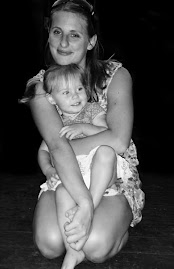There are so many kinds of “assistive technology” that can be utilized in classroom settings; it’s almost overwhelming! On a recent visit to the EATRC, I was able to explore a few of the choices that are available. The VoicePOD is a reading comprehension and vocabulary assistive technology. It is a hand-held digital recording and playback device, which uses pictures to help students with new vocabulary. I think that any learner would benefit from this technology because it seems like it would be easy to adapt to a variety of needs, but it would be especially useful for students who are English language learners. It would teach students new vocabulary and it would enable students whose primary language is not English to listen to a native speaker (you) pronouncing the word in the correct way.
Another way to encourage English Language Learners is with Podcasts. You can record as many books as you want for your students and it is really easy to do. Students will enter each classroom with a variety of learning styles and needs. Each student should be met on an individual level in order to meet those diverse needs. One way in which to do this is with the use of podcasts. Podcasts can be used in the classroom to assist students who may be having difficulty with reading. They can listen to the audio while reading along with the book. Podcasts can be accessed on a home computer, or i-pods can be checked out to students so that they can practice at home.
This could be extremely helpful for students who are English Language Learners because they can hear a native speaker reading aloud with them. Podcasts can als o be useful tools for building fluency. A unit on fluency might culminate with students making their own podcasts, which could be extremely motivational.
I would plan a variety of learning activities for my classroom. I would teach a unit on Jan Brett (or another appropriate author) in which students would support their learning with supported and independent exploration of the Jan Brett Web site. I would plan a group social studies project in which students would use a web quest to research and collect data on a historical time period (e.g. Pioneers), which they would then present to the class in a digital presentation. Students would be expected to publish some of their writing pieces using word processor. I would plan a science unit in which students would explore digital graphic organizers to learn about the life cycle of butterflies (or some other appropriate plant or animal). And I would provide ample opportunities for students to explore (with support) digital programs such as Starfall, in which they are able to scaffold their reading and
As teachers, we have an amazing opportunity. We can provide our students with the skills they need to be successful in a technology driven society. We can encourage them to ask questions about media the same way that they do about literature. Let's educate them about the techniques advertisers use to get you to want their product. Let's show them how to create their own media, so that they can use it to their advantage and take pride in what they have created.
For more information about how to incorporate media literacy into the classroom, go to http://www.edutopia.org/media-literacy-skills-video and watch Media Smarts: Kids Learn How to Navigate the Multimedia World
phonics development with the use of digital resources.



